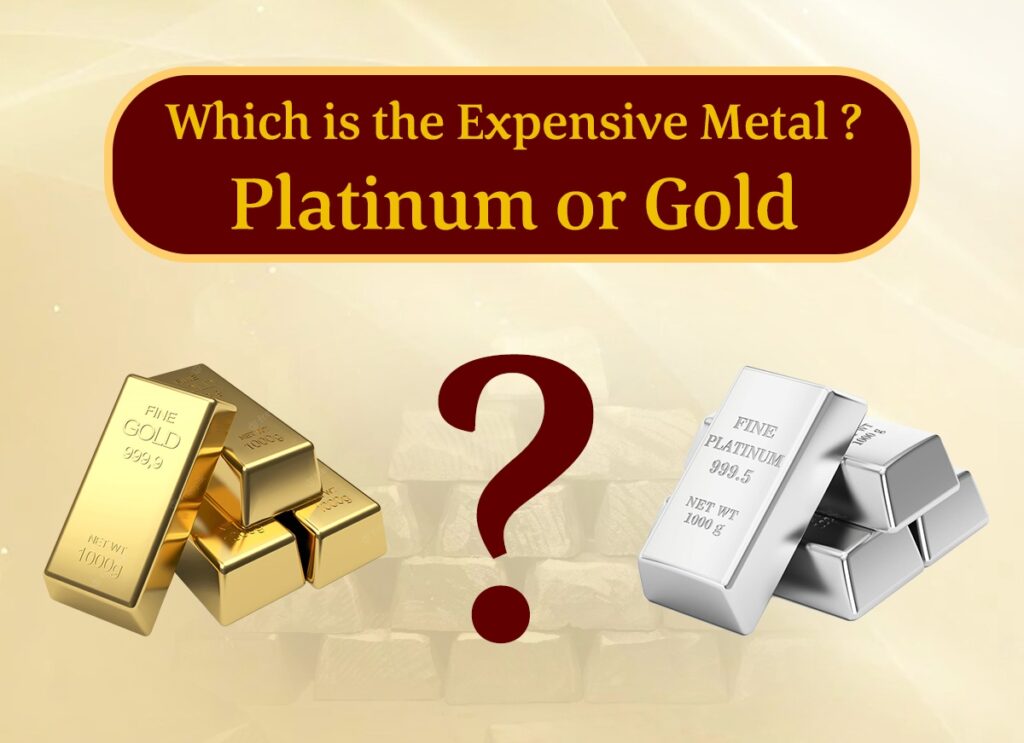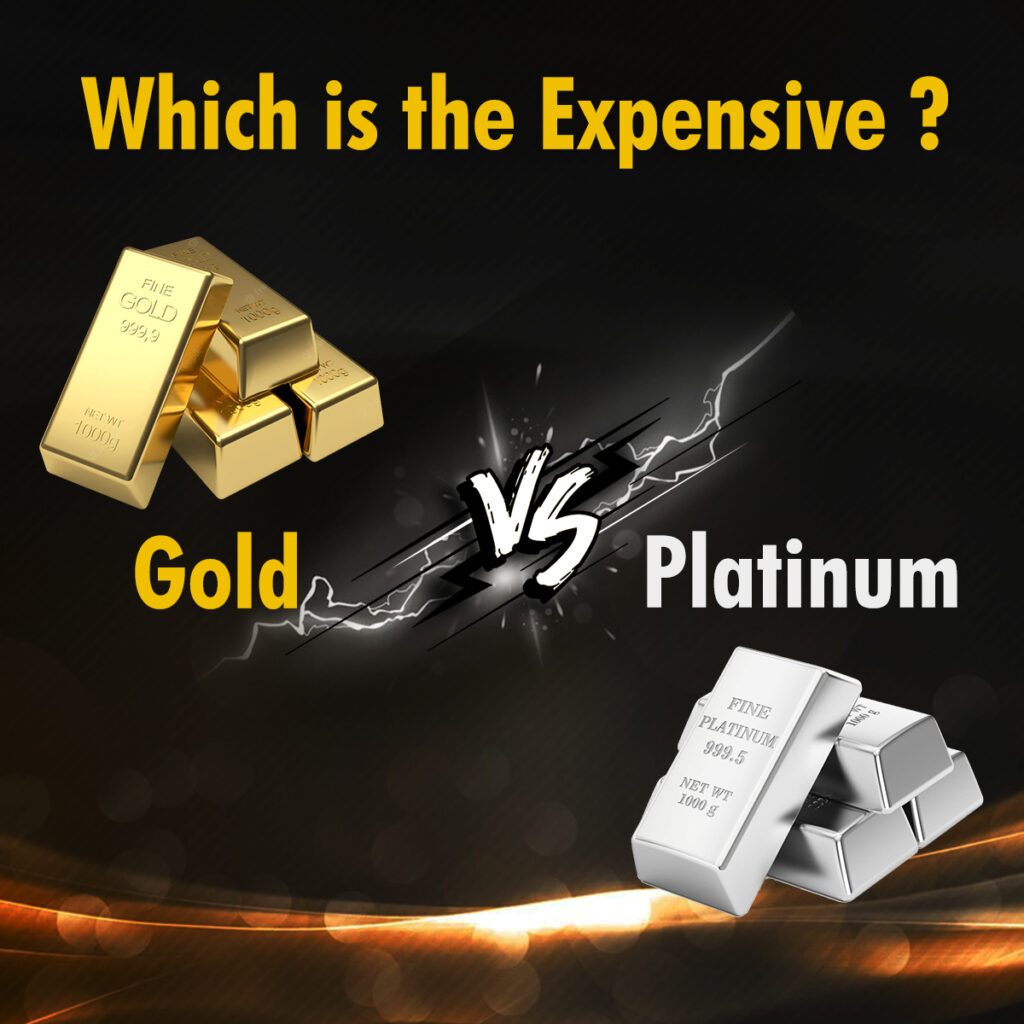GOLD and PLATINUM are two precious metals admired for their beauty and monetary value. Both are excellent investments and lovely gifts, but there are some key differences. Some of these differences are obvious, while others are more surprising.
We’ll look at the color, comfort, appearance, maintenance, durability, and value of these precious metals in the sections below. Continue reading to find out how gold and platinum compare.
GOLD VS PLATINUM FACE-TO-FACE COMPARISON:
GOLD VS PLATINUM – COLOR
The most noticeable distinction is between platinum and gold in color. Platinum is only available in white, whereas  most people associate gold with yellow. However, gold comes in a variety of colors, with white gold looking the most like platinum.
most people associate gold with yellow. However, gold comes in a variety of colors, with white gold looking the most like platinum.
White gold is made up of rhodium-plated alloys of hard metals such as nickel, zinc, and copper. Platinum, on the other hand, is composed of 95-98% pure platinum with only minor alloys mixed in.
White gold has rhodium plating, which gives it a bright silvery-white color and protects the ring. However, the rhodium plating fades over time, giving the white gold a more yellow appearance. When this happens, your jeweler can replace it to restore the white color. Platinum, on the other hand, will never turn yellow because it is naturally yellow.
Both gold and platinum have a lustrous surface, but platinum keeps its gleaming appearance longer than white gold. After a few years, white gold will lose its luster and require polishing and replating.
GOLD VS PLATINUM – WEARABILITY
Other alloys (metals) are added to jewelry to change its color, strength, shine, and so on. Some of these metals, however, can cause skin reactions. Nickel is the most notable offender. If you have sensitive skin or a nickel allergy, look for “hypoallergenic” options.
Platinum, for example, is a hypoallergenic metal that is extremely unlikely to cause skin allergies. When it comes to gold, yellow gold is the most hypoallergenic (white gold, rose gold, etc. all have higher percentages of other metals mixed in).
When it comes to weight, gold is lighter and less dense than platinum, making it more comfortable to wear.
Because platinum is softer than 14k gold, it scratches more easily than 14k gold. 14k gold is composed of 58.3% gold and the rest of the alloys make it difficult to scratch or dent.
The advantage of platinum is that it does not lose platinum when scratched. Instead, the platinum metal moves to a different part of the surface. This is easily repaired and buffed back to its original state. When you scratch gold, the actual metal comes off the surface, making buffing more difficult.
Scratched platinum rings also have an antique-looking patina finish, which some people prefer.

GOLD VS PLATINUM – APPEARANCE
Platinum and white gold appear very similar, but platinum will retain its appearance for a more extended period due to its purity and strength. White gold will need to be re-plated every few years, which isn’t a big deal but does require a little more effort.
If you are not married to white metal, yellow gold is an excellent choice for a variety of reasons. It requires less upkeep than other colors, and if you’re looking for an engagement ring, you can choose a slightly tinted diamond.
A diamond with a tint will stand out against a white metal such as platinum. A slightly tinted diamond, on the other hand, will stand out against yellow gold and appear colorless.
Red, pink, and rose golds all have different copper and silver mixtures with the gold to change the color. If you like the Rosey color and want a long-lasting piece of jewelry that is also affordable, this is a great option.
GOLD VS PLATINUM – MAINTENANCE
White gold requires the most maintenance to keep its color. To keep it from turning yellow, you should polish and  replace it every few years. Yellow gold and rose gold require polishing and sometimes replating to keep their luster, but for the most part, they can be cleaned at home.
replace it every few years. Yellow gold and rose gold require polishing and sometimes replating to keep their luster, but for the most part, they can be cleaned at home.
Platinum, like all jewelry, scratches and becomes dull over time. However, you can usually get away with regular house cleanings to keep it looking nice. Furthermore, polishing platinum smooths the piece rather than thinning the metal, so you can do it as often as you like.
If low maintenance is important to you, platinum is the best option. Platinum, rose gold, yellow gold, and white gold are the lowest maintenance metals. Platinum requires the least upkeep, while white gold requires the most.
GOLD VS PLATINUM – STRENGTH, AND DURABILITY
While both precious metals are strong, platinum outlasts gold. Because of its high density and chemical composition, it is less likely to break than gold and thus lasts longer. Because of the chemical structure, the metal displaces on the surface when struck, so no precious metal is lost.
Platinum, despite being stronger, is also softer than 14k gold. As a result, it scratches more quickly. Higher karat golds (18k & 24k) are significantly softer and scratch resistant, comparable to platinum. Rose gold is the most durable of the golds due to its high copper content.




